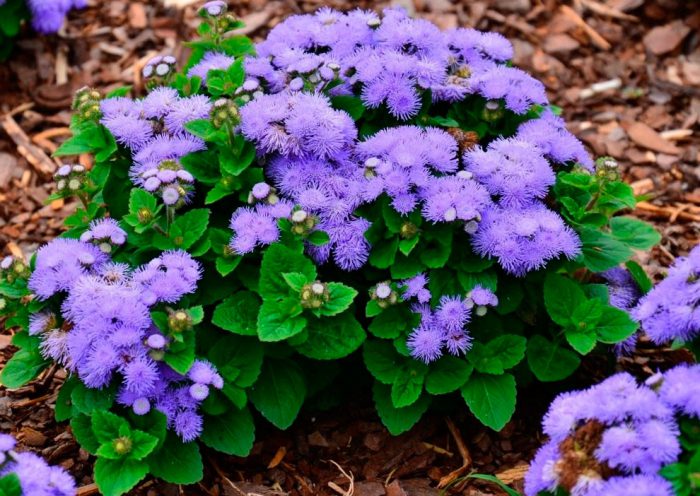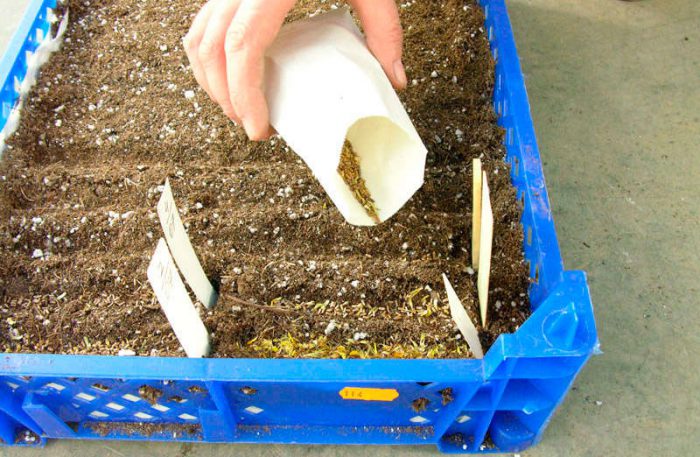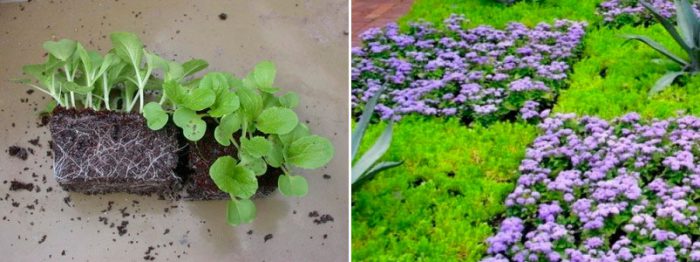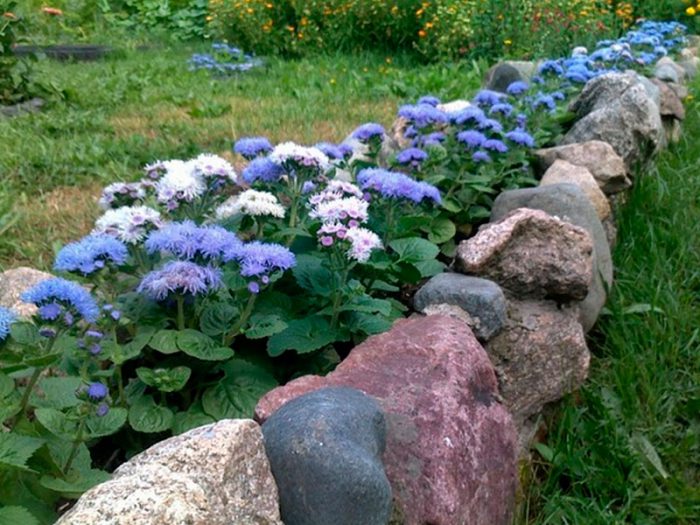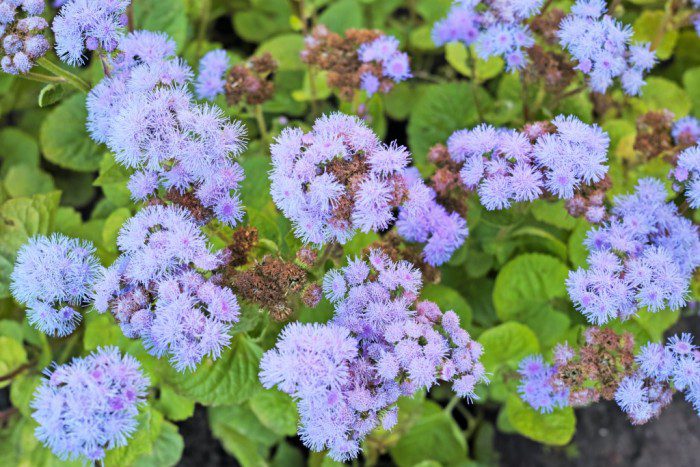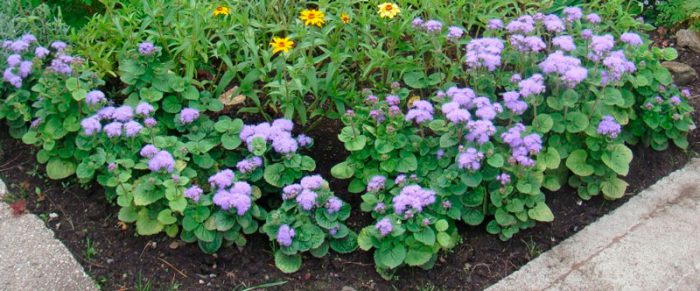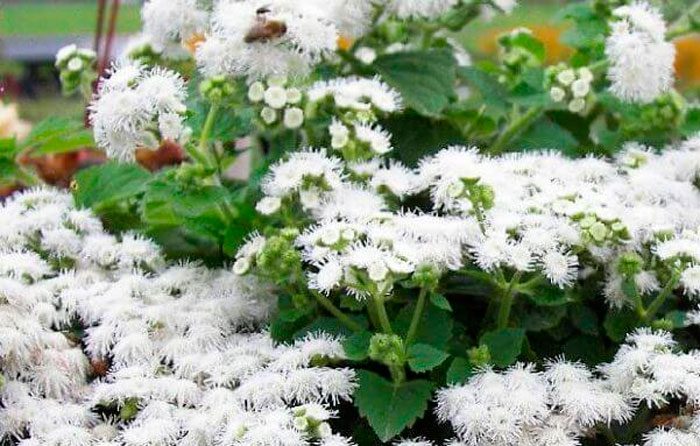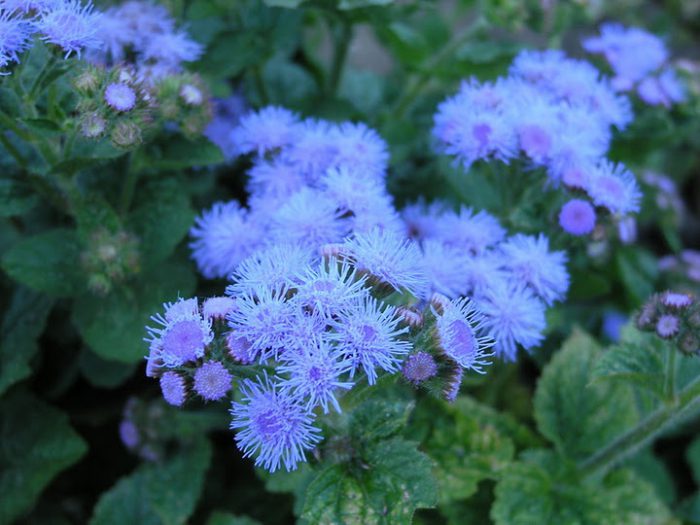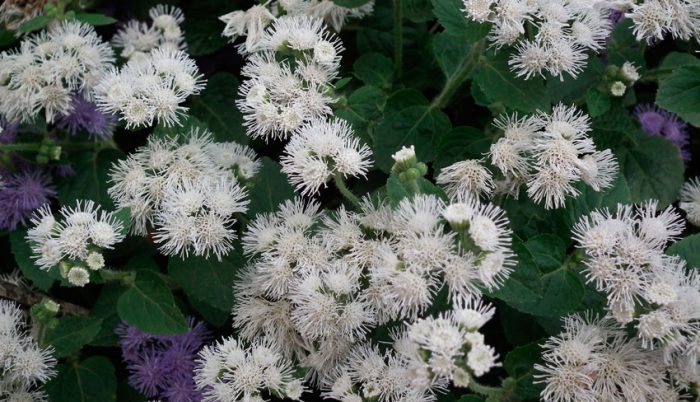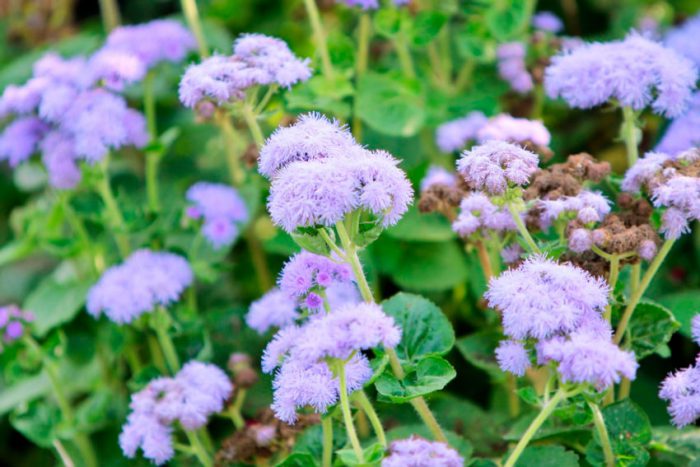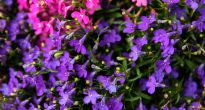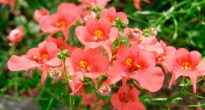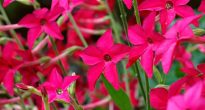Ageratum (Ageratum) is a representative of the aster family. In nature, such a plant can be found in Central and North America, Eastern India. The name of such a flower is derived from the Latin word ageratos, which translates as "ageless". The fact is that cut lovely flowers can stay fresh for a long time. Since the 19th century, such a plant has become popular in European countries, and in Russia it is also called "long-flowered". This plant fell in love with gardeners for its spectacular fluffy flowers that look similar to pompons, which are part of very dense inflorescences. They are usually colored in various shades of blue. Also, such a flower is very undemanding to care for. There are approximately 60 types of ageratum.
Content
Ageratum features
On a fairly compact bush there are bright green petiole leaf plates in the shape of an oval, triangle or rhombus. Their edge is serrated. Leaves in the upper part are alternate, and in the lower and middle - opposite. There are many erect shoots, on the surface of which there is pubescence. Their height varies from 10 to 60 centimeters. Small bisexual fragrant flowers are part of not very large (diameter 1–1.5 cm) inflorescences shaped like baskets. And they are collected in complex corymbose inflorescences. They can be colored purple, pink, blue or white. The fruit is a 5-sided achene of wedge-shaped elongated shape. 7 thousand seeds weigh only 1 g. Their good germination is maintained for 3-4 years.
In the middle latitudes ageratum is grown as an annual because it is not frost-resistant. Such a plant will be able to decorate a rabatka, a flower bed, and will also look great in carpet compositions. This flower can be planted with marigolds, calendula, snapdragons, which are also annual plants.
Features of growing ageratum from seeds
Sowing
Most often, such a plant is grown from seeds. Sowing is carried out from mid to late March. In this case, the boxes must be filled with a mixture that includes sand, humus and peat (1: 1: 1). Sprinkle the seeds with a thin layer of soil. The container is broken up with glass or film and removed into heat (at least 15 degrees).Crops need daily ventilation. The soil should be slightly moistened all the time. Therefore, it must be systematically moistened from a spray bottle. The first shoots will appear in about 14 days, after which the shelter should be removed.
Seedling
When the seedlings have a couple of real leaves, they need to be planted more spaciously. The pick is carried out 2 times. During the 2nd pick, the plant is planted in separate pots (cups). Ageratums need dry air and a constantly humidified substrate. Plants can only be watered in the morning. A couple of weeks before planting, the plant should be transferred to the street. If there is a threat of freezing, then the seedlings must be covered.
Landing
Landing in open ground should be done after the threat of night frost has passed. The selected area of soil should not be exposed to drafts. The place must be sunny, because with a lack of light, the plants stretch out and bloom very poorly. A non-acidic, light, well-drained soil that is rich in nutrients is best suited. However, this plant is not too demanding on the soil. In carefully loosened soil, you need to make not too deep pits, the distance between them is from 10 to 15 cm. You need to plant seedlings to the depth at which they grew in the container. Flowering begins after about 8 weeks.
Outdoor Ageratum Care
In order for the Ageratum to please you with its unusually beautiful flowers, it needs to be properly cared for. So, this plant needs to be watered in a timely manner, remove weeds, loosen the soil, and also apply fertilizers to the soil. It needs a fairly abundant watering, but at the same time it is impossible to fill the flower in any case. After the plant is watered, it is necessary to loosen the soil and at the same time pull out all the weeds.
Top dressing is carried out with a frequency of 1 time in 2 or 3 weeks. Mineral or humic fertilizers are perfect for this. It is also recommended for feeding an infusion prepared on a mullein. But it should be borne in mind that fresh manure cannot be used for feeding ageratum, because the plant reacts to it extremely negatively. Also, you should not overfeed the flower, because in this case the green mass will grow vigorously, but the flowering will become scarce. Do not forget to pick off fading inflorescences in a timely manner. This plant needs pruning for abundant and spectacular flowering. So, only a few internodes should remain on the shoot. After the pruning procedure, the plant begins to grow actively and bloom more abundantly.
What to do when ageratum fades?
Before the first frosts begin, it is recommended to dig up the most lush bushes and plant them in separate flower pots. Plants can be placed in the house, on the veranda or on the balcony. Ageratums will bloom for the entire autumn period, and maybe even part of the winter. From these bushes in early spring, you can cut off cuttings and root them. Then, with the onset of heat, they are transplanted into open ground.
Such a plant is very fond of warmth, therefore, it is not able to overwinter even under cover under the condition of a mild winter. In this regard, in the fall, it is necessary to remove plant residues from the flower bed, and in the spring to plant new flowers there.
Pests and diseases
Ageratums are not resistant to diseases, which is considered their main drawback. Often, rot appears on the root system of such a plant. If this happens, then it will no longer be possible to save the infected bushes. However, it should be noted that the appearance of root rot can be prevented, and some fairly simple preventive measures will help you with this. So, the first step for planting is to choose a light, well-drained soil. Water the plant carefully, avoiding overflow. You also need to systematically loosen the soil.All this will help to avoid the appearance of rot on the roots. Ageratum is also prone to cucumber mosaic, as well as bacterial wilting, and such diseases develop due to violation of the rules of care.
Seedlings of ageratums, which are in the house or in the greenhouse, must be protected from pests such as whiteflies and spider mites. If insects are found, the infected leaves must be cut off and treated with an insecticidal agent.
In the open field, nematodes and scoops can settle on this plant. Getting rid of such pests is not so easy, it is much easier to prevent their appearance. To do this, it is enough to provide the ageratum with proper care. Remember that only with prolonged violation of the rules for caring for such flowers, they become susceptible to various diseases and pests.
The main types and varieties with photo examples
Since it is not very difficult to grow such a plant, and there is nothing difficult at all in caring for it, it has gained quite large popularity among flower growers. Below are the most popular varieties and types of ageratum.
White Ageratum
The height of the bush reaches 20 centimeters, erect shoots. Fragrant flowers are painted white.
Ageratum blue "Blue mink"
Compact, strong and well-branched bushes reach a height of 20 to 25 centimeters. Very fluffy inflorescences are painted in a bluish color shade and outwardly they are similar to mink fur, since the bush is completely covered with them. The inflorescences have a diameter of 5 to 8 centimeters.
Ageratum Houston, or Ageratum Mexican
Small bushes have the shape of a ball. Their height varies from 15 to 60 centimeters (depending on the variety). Fluffy flowers are collected in baskets, which are part of the inflorescences with a diameter of 3-8 centimeters.
Varieties
- «Alba"- white flowers are collected in dense inflorescences.
- «Azur Pearl"- blue flowers are collected in fairly large inflorescences.
- «Faye Pink"- dark pink loose inflorescences have a diameter of 4 to 5 centimeters. The leaf plates are rather small. The height of the bush varies from 20 to 30 centimeters.
- «Blue Mink"- bluish flowers have a lilac tint. The leaves are large enough, and the height of the bush reaches from 25 to 30 centimeters.
- «Blue Bouquet"- the flowers are painted in a beautiful blue color. This variety has the greatest height - 45 centimeters.
- «Bavaria"- rather large loose inflorescences consist of two-colored flowers. So, their middle is pale blue (almost white), and around there are thin petals of a deep blue color. The bush is 25-30 centimeters high.
- Hybrid plants of the Hawaii cultivar group: "Royal Hawaii" - the height of dwarf plants does not exceed 15 centimeters, the flowers are violet-purple; "White Hawaii" - dwarf bushes do not exceed 18 centimeters in height, white flowers.

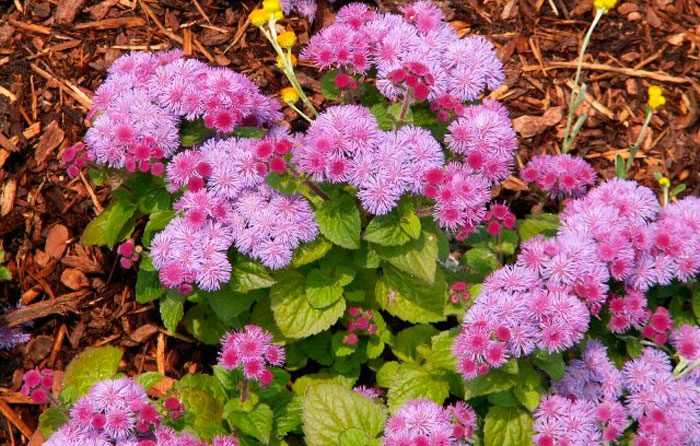
Royal Hawaii

